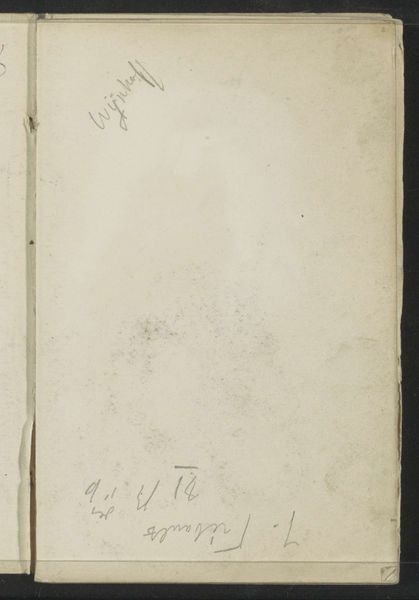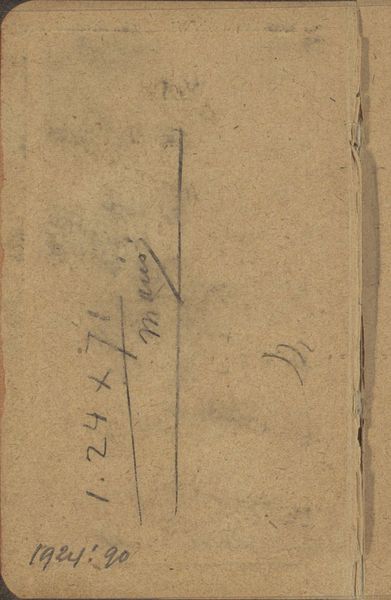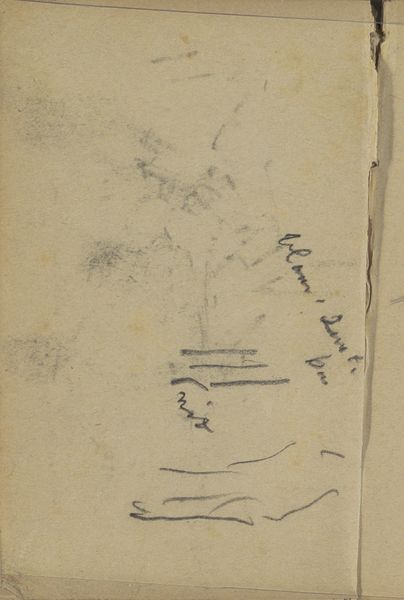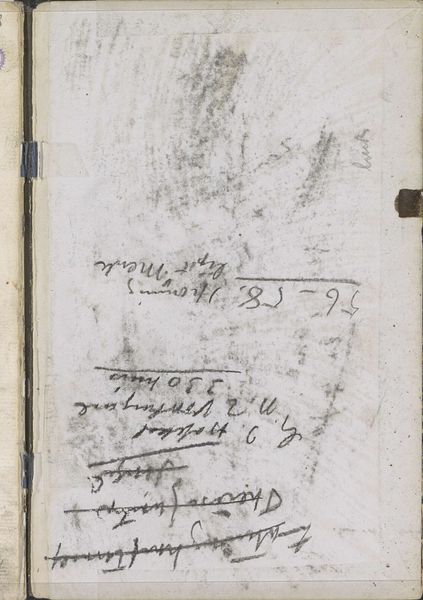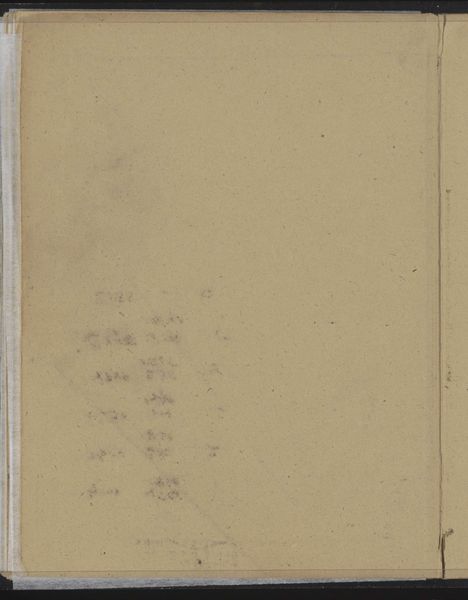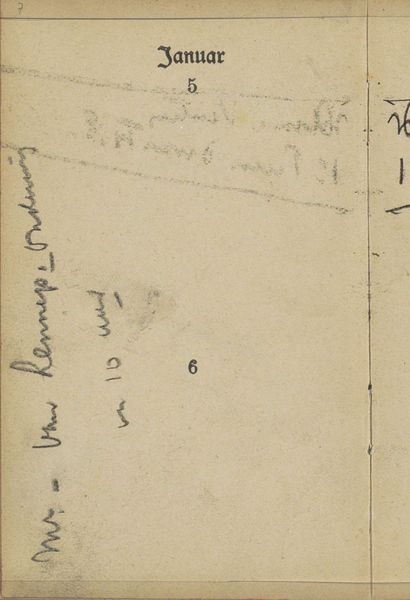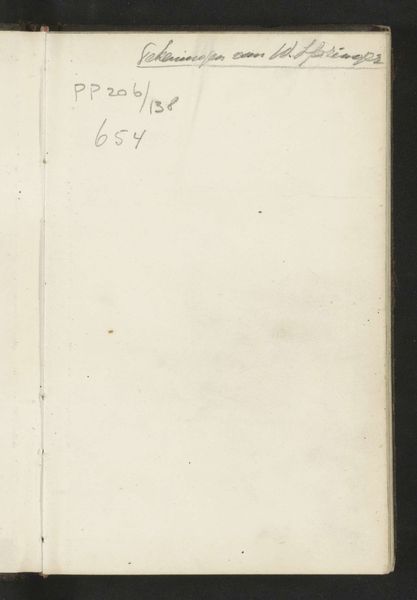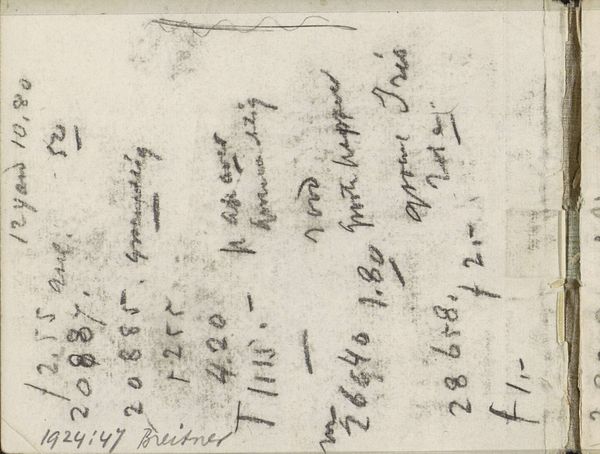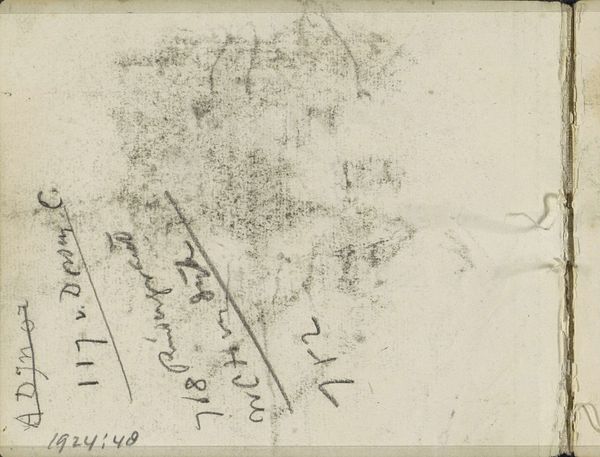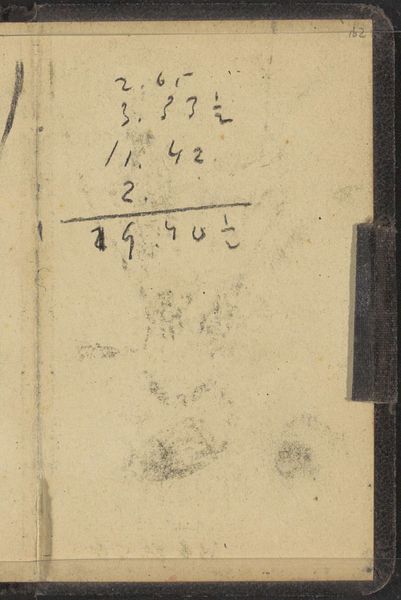
Abklatsch van de tekeningen en annotaties op pagina 79 c. 1887 - 1891
0:00
0:00
willemwitsen
Rijksmuseum
drawing, paper, ink, pencil
#
portrait
#
drawing
#
impressionism
#
landscape
#
paper
#
ink
#
pencil
Copyright: Rijks Museum: Open Domain
Editor: This is “Abklatsch van de tekeningen en annotaties op pagina 79” by Willem Witsen, created sometime between 1887 and 1891. It’s a drawing in ink and pencil on paper. Honestly, it looks like a random page torn from a notebook! What do you see in this piece? Curator: Indeed, on the surface, it seems quite unassuming. But let’s consider its socio-historical context. Witsen was part of a vibrant artistic community in late 19th-century Amsterdam, deeply engaged in representing modern life and landscapes. What purpose did sketchbooks serve at the time? Were they purely for personal use, or something more? Editor: I guess I assumed they were just for private use – like, preliminary sketches or private thoughts? Curator: Precisely. But increasingly, the "private" sketches of artists like Witsen entered the public sphere. Galleries began to display what was previously considered informal studies, elevating the sketchbook page to an object of artistic merit. So this 'random' page becomes a statement about the creative process. It reflects how artistic value could be constructed and institutionalized around even the most unassuming of images. Do you see evidence of that shift in this piece? Editor: I see… knowing that it was deemed worthy of preservation and display changes everything. Suddenly the apparent randomness becomes deliberate. Maybe it is showing the artist’s thought process? It feels like a glimpse behind the scenes. Curator: Exactly. What does it tell us about shifting public perception of art and artistic genius if a casual sketch, seemingly untouched by deliberate intention, can be put in the Rijksmuseum? Editor: That is thought provoking. It sounds like something quite simple really opened my eyes to how social context affects art. Curator: Indeed. The piece invites us to reconsider art’s place in our society and who gets to define its value.
Comments
No comments
Be the first to comment and join the conversation on the ultimate creative platform.
